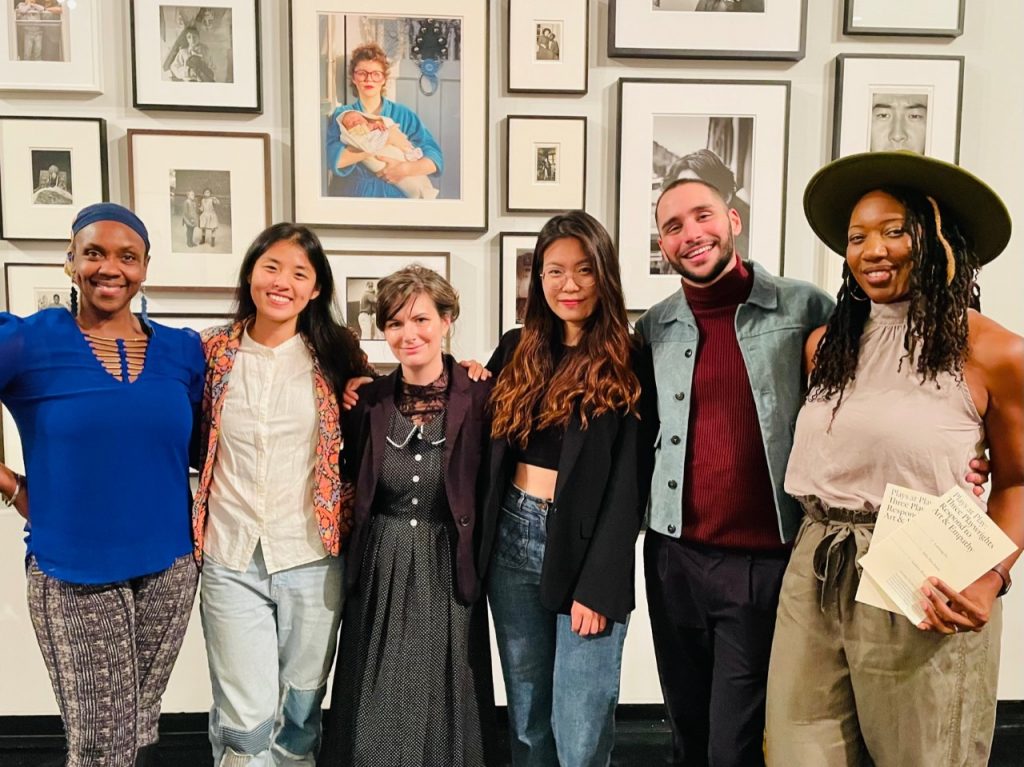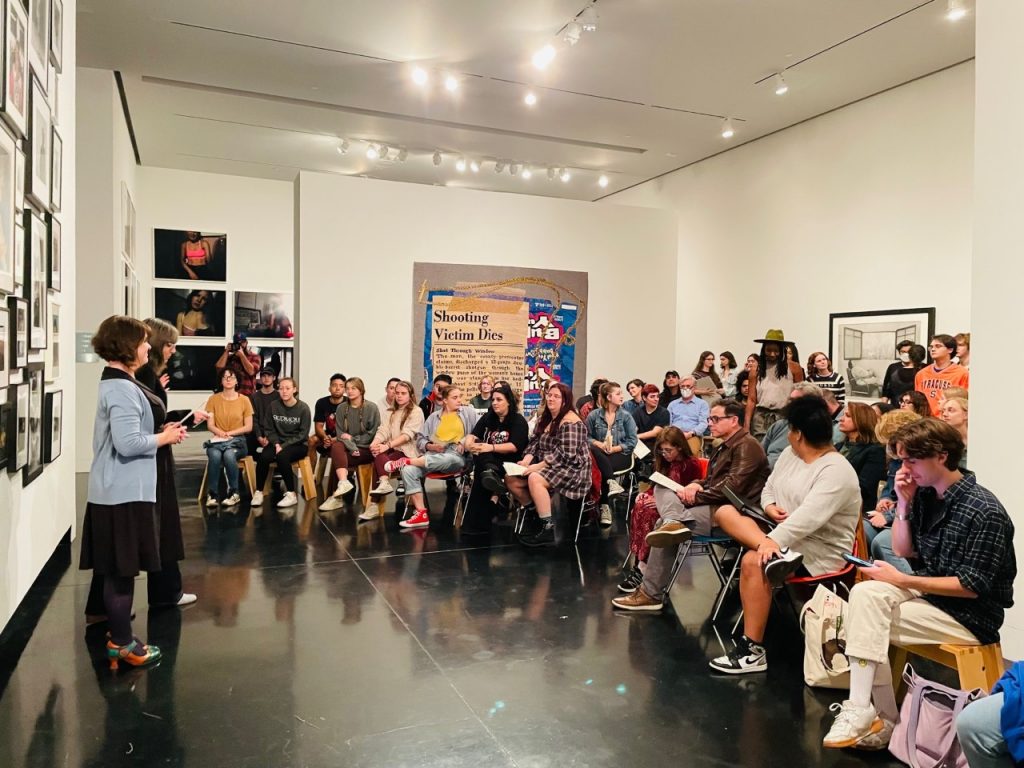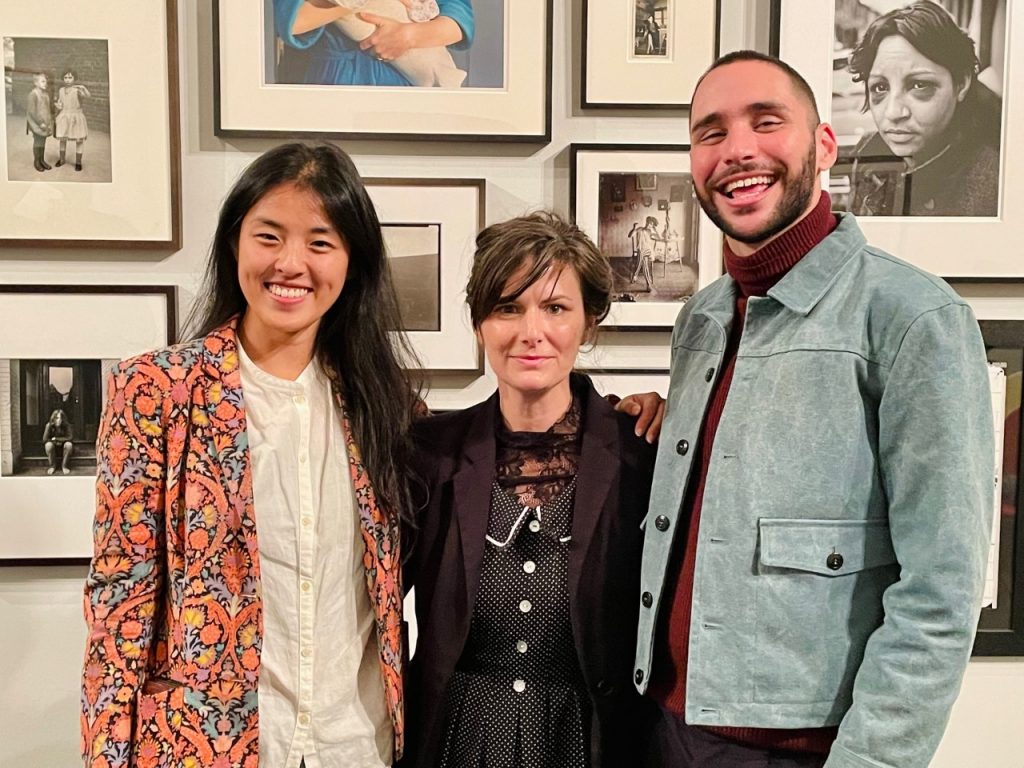By Max McGuire ’24

When thinking about art and theatrical performance over the past two years, we’ve had to adapt and accommodate for our ever changing world. It feels as if the longer the pandemic drags on, the more and more we become accustomed to theater taking new forms. We start to rethink what “performance” means, and how it makes meaning with the individual viewer. At the heart of it all, I believe that art comes from human emotion, and I find it inspiring to see what can be created from love, loss, pain, isolation; the list goes on. Those are emotions we all resonate with.
A little side tangent, but I promise it has a point; I spent my summer working as a summer camp counselor, and one of the most valuable parts of training revolved around how to empathize with children and other counselors. You’d think that empathy is not something that would have to be taught, but rather something humans just do. You’d be right; truth be told, there’s no way to teach empathy by the book, yet, for such a natural human function, we often confuse empathy for sympathy. I can recall a video we watched, during said training session, where Dr. Bené Brown discussed the difference between the two, and she says: “empathy fuels connection. Sympathy drives disconnection”. That, when someone is (metaphorically) “down in a hole”, empathy is getting in that hole with them in order to show them the way out. Sympathy is looking into the hole and saying “Wow, that sucks that you’re in a hole”.
I had no expectations as to what I was about to witness the night of November 27th at the Tang. I knew that there would be three staged readings occurring. I knew that they had been written by three professional playwrights and directed by Skidmore faculty members. I knew that some of my closest friends would be performing that night, but when it came to the close details, I was going into this event completely blind. However, upon attending, I realized just what this collaborative project between the JKB and the Tang was aiming to show; that after almost two years of on and off isolation, it’s still possible for us to connect with each other.
The performance ran about thirty minutes in total, occurring both at 6:00 pm and 7:30 pm. Audience members were ushered upstairs to a small gallery, covered ceiling to floor with an immense variety of paintings and photographs, none of which had any apparent connection or correlation to each other. After a few brief words of introduction from both the Chair of the Theater Department, Dr. Lisa Jackson-Schebetta, and Associate Curator for the Tang, Rebecca McNamara, who co-curated the event, the first play, Palindrome, took off in full swing.

Palindrome is an absurdist play, written by playwright and novelist (and past Theater Dept. playwriting professor), Julia May Jones, and directed by Visiting Assistant Professor of Theater, Ji Won Jeon, featuring the talents of Penn Hoen ‘24, Aminah Hopewell ‘26, and Isadora Zucker ‘25. The play takes place in a museum, not far off from the Tang, with the actors physically moving around the space as they perform. At first, I found myself dazzled and confused by the strange sentences the actors spoke, but as the three actors danced around the space, making jokes about the miracle of birth, I was able to put the pieces of the puzzle together. The piece itself is a palindrome, except instead of having sentences that meant the same thing forwards and backwards, the lines took on different meanings when said in different orders, by different actors. As for the art pieces in the gallery, their presence in the space was a performance in itself, showing the faces of different strangers who, at first glance, we’d know nothing about. Palindrome was the best play to start the night off with, in my opinion, because it acted as the thesis for the whole event; how do our words and actions resonate with the people around us, and how are we connected to the people we consider strangers?
Always the Sheep, written by playwright Lanxing Fu, and directed by Artist-in-Residence, Teisha Duncan, helps to answer the questions that Palindrome proposes. The play itself follows May, portrayed by Nancy Yang ‘26, and her interactions with four other people- a stranger, a friend, her mother, and herself. In between the conversations May has with the people around her, we see a glimpse into her own psyche, where she sees herself as a sheep with large horns. Always the Sheep shows audience members that empathy is possible on all levels, and that we all have inner struggles going on underneath the surface that we wouldn’t know at first glance, just like with the photos in the gallery.
Finally, to conclude the evening, Please, let me give you a lily by Visiting Artist-in-Residence in Playwriting, Andrew Rincón, directed by Hettie Barnhill, created a case specific example of how empathy changes the lives of the people around us. Camilo, portrayed by Javier Soto ‘25, finds Lily, portrayed by Erin Einzig ‘23, on the ledge of the roof, ready to jump. Although there is a language barrier between them, the two are able to connect because of their similarities; both feel isolated from their families, both have specific interests that captivate them, from plants to rocks, and both fall in love with the dancing of Angelene, the dancer, portrayed by Nayah Reagans ‘26. What made this final play come to life is how Nayah, who sat in front of me the entire evening, suddenly danced her way from the audience to the stage. This direction made it feel as if we were a part of the story; that even though it was only a performance, empathy is still something we all can connect to.

All three plays, in the time, space, and order they were performed in, told a story that the audience knows all too well. It is a story of feeling lost, and finding yourself amongst friends and strangers. It is a story of identity, and how we are perceived at face value is not the same as who we are underneath. It is a story of reaching out, and finding that there’s always a hand there to hold onto when life gets too dark. That, out of the seven billion people on this planet, perhaps there is some method of madness behind who we meet, and who changes our lives for the better. Aside from the intimacy of the gallery space in the Tang, I think what made this performance so memorable is that after the pandemic, there was something that everyone could take away from this performance; that we could see ourselves in not only the characters, but in the faces hung on the wall. This is what art, in any form, should make one feel; art should be able to resurface deep emotions about one’s self in relation to the people around them, giving them a new perspective about how the world works.
Link to the Béne Brown Video: https://www.youtube.com/watch?v=1Evwgu369Jw
